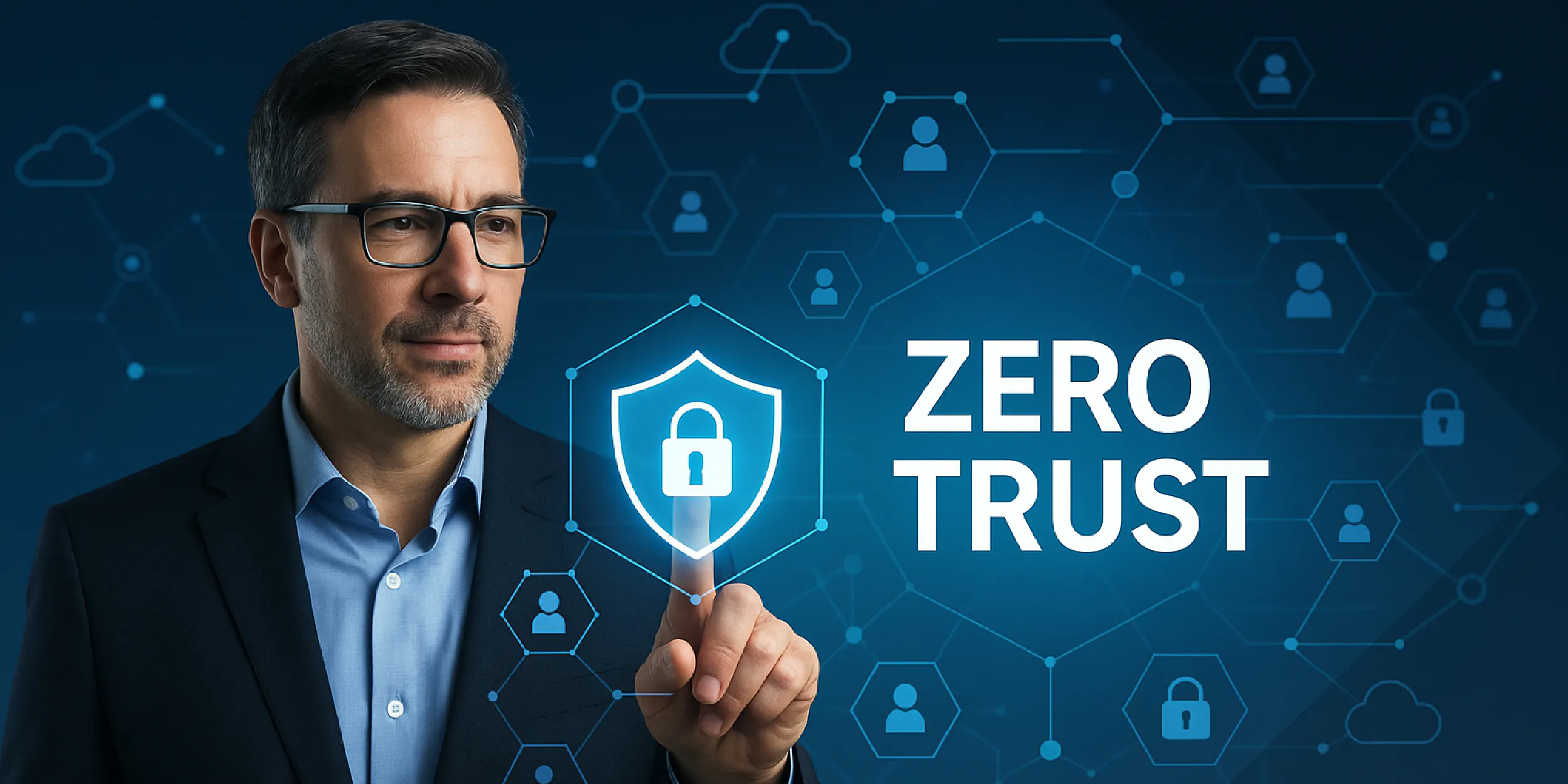Why Business Leaders Can’t Ignore Zero Trust Security
You’ve probably heard the term “Zero Trust” tossed around in security conversations. But what is it, really—and why does Zero Trust security matter for your business?
Here’s the short version:
Zero Trust is a modern security model that assumes no person or device can be trusted automatically—even if they’re inside your network or already logged in.
Every access request—whether it’s someone checking email or a software system connecting to another—must prove it’s safe every time.
Why? Because in today’s world:
- Employees work from everywhere
- Data lives in the cloud
- Hackers are constantly trying to sneak past weak spots
Zero Trust makes sure your business isn’t relying on luck. It relies on proof.
Traditional Security Is Outdated—Here’s Why
Old-school IT security was like a castle with a moat. Once you got in, you had free reign.
Today? There’s no moat:
- People access systems from laptops, phones, or home Wi-Fi.
- Apps run on cloud platforms like AWS or Microsoft Azure.
- Cybercriminals can buy stolen passwords on the dark web and log in like a normal user.
If your system automatically trusts someone once they’re “in,” that’s a massive risk.
Zero Trust: A Better Way to Think About Security
Imagine your business is a secure office building. In the old model, once someone walked through the front door, they could go anywhere.
With Zero Trust:
- They need a badge swipe for every room they enter.
- Cameras watch for unusual behavior.
- Access can be cut off immediately if something looks suspicious.
It’s not about being paranoid—it’s about being proactive and smart.
Key Principles of Zero Trust (No Jargon, We Promise)
Here are the three big ideas behind Zero Trust, in plain English:
1. Never Trust Automatically
Just because someone’s on your network doesn’t mean they should get access to everything. Every request is checked.
2. Verify Every Time
Access is based on who you are, what device you’re using, where you’re connecting from, and whether your device is secure.
3. Limit What People (and Systems) Can Do
Everyone and everything only gets access to exactly what they need—nothing more. If something gets hacked, it can’t spread across the entire system.
What Does Zero Trust Look Like in Action?
Let’s walk through a couple of real-world scenarios:
✔️ Example 1: Protecting a Remote Team
Your employee logs in from a home laptop. Before they can access company files:
- They’re asked for multi-factor authentication (like a code sent to their phone).
- Their device is checked to make sure it has up-to-date software.
- If anything looks off—say they’re logging in from another country—it’s flagged or blocked.
✔️ Example 2: Preventing Hackers from Moving Around
A hacker gets into your network using a stolen password. But with Zero Trust:
- They can’t access systems they don’t have permission for.
- Each request for access is blocked unless it checks out.
- Your security team is alerted immediately.
The damage is contained and controlled, not catastrophic.
✔️ Isn’t This Just More IT Headaches?
Nope. It’s actually the opposite.
Done right, Zero Trust:
- Simplifies security by enforcing clear, consistent rules
- Reduces the chance of a major breach
- Improves compliance with data privacy laws
- Builds trust with customers and stakeholders
Yes, it takes work to implement—but the payoff in reduced risk and peace of mind is huge.
Why CEOs, CFOs, and CTOs Should Care
Here’s what’s at stake if you don’t act:
- Reputation loss from data leaks
- Ransomware attacks shutting down operations
- Legal and financial penalties from compliance failures
- Lost customer trust if personal data is compromised
Zero Trust is about protecting your business, not just ticking off IT checkboxes.
Even if you’re not a tech expert, you’re responsible for making sure your business is secure and resilient. Zero Trust gives you a framework to do that.
What About Devices Like Printers and Copiers?
Most leaders don’t realize this, but:
- Printers are often connected to your network
- They can store data (even after you’ve printed)
- They can be hacked like computers
At Doceo, we secure these “hidden endpoints” by:
- Requiring users to log in before printing
- Encrypting print jobs so they can’t be intercepted
- Automatically wiping printer memory when devices are retired
- Locking down software updates to prevent tampering
That’s Zero Trust in action—applied to every corner of your business.
The Business Case: What’s the ROI?
- According to IBM, organizations with Zero Trust spend $1.76 million less per breach on average.
- A secure, trust-based system makes it easier to get cyber insurance, pass audits, and meet customer security expectations.
- Less downtime. Fewer surprises. Better sleep at night.
And here’s the truth: You can’t afford not to invest in this.
Ready to Make Your Organization More Secure?
Zero Trust isn’t about fear. It’s about control, visibility, and smart decision-making.
Whether you’re managing a remote workforce, migrating to the cloud, or just trying to stay ahead of threats, Zero Trust is your foundation for real security.
Let Doceo Help You Get Started
You don’t need to figure this out alone.
Doceo helps organizations of all sizes implement practical, real-world Zero Trust strategies across:
- Cloud systems
- On-site networks
- Printers and MFPs
- Remote devices
Talk to a Doceo expert today or call 888-757-6626 for a simple, no-pressure conversation about where to start.
Doceo: Proven Technology. Proven People


